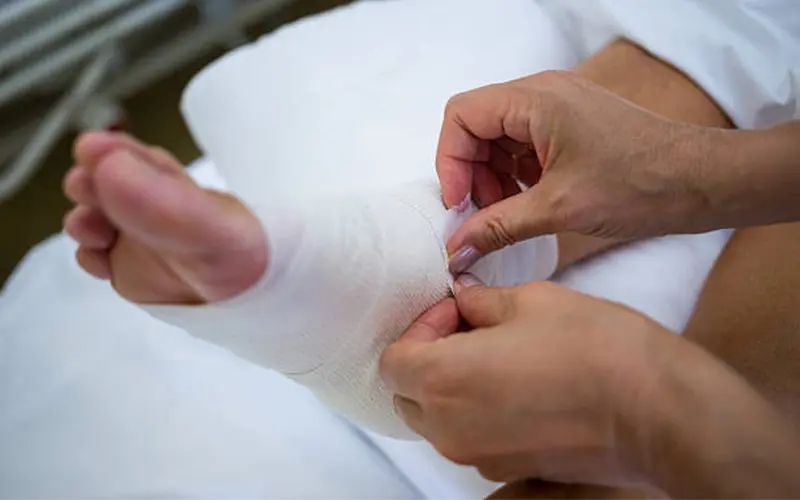Diabetic Limb Salvage

When you live with diabetes, you have numerous health concerns and considerations. The disease can have wide-ranging effects throughout your entire body. At first glance, foot problems might not seem like a major issue, but diabetes is a leading cause of foot and leg amputations.
Adhering to a diabetic foot care plan is a smart starting point for keeping your lower limbs healthy and reducing your risk of lower limb complications.
Understanding Diabetic Limb Issues
Diabetes can cause a dangerous combination of impaired blood circulation and peripheral neuropathy (nerve damage) that contribute to ineffective wound healing in your lower limbs. Elevated blood sugar levels cause serious damage to the nerve and muscle functions of the feet.
Nerve damage, called neuropathy, limits the ability of diabetic individuals to feel pain or to recognize minor injuries so they become unaware of the damage that is occurring. These changes in the foot combined with loss of “protective sensation” often lead to ulcer formation. Breaks in the skin cause erosion of underlying tissues and may extend to underlying muscle and bone and can lead to advanced infections and gangrene.
Diabetes also causes plaque to accumulate in the arteries to the legs and feet. This is called peripheral arterial disease (PAD) and dramatically reduces the oxygen and blood supply delivered to the skin and underlying tissues. When adequate blood flow is not restored, healing is often not possible.
According to the Centers for Disease Control (CDC), one of the most common and costly complications of diabetes is foot ulcers. Ulcers occur in approximately 15% of all diabetic individuals and one in five diabetic foot ulcers leads to some level of toe or extremity amputation. Diabetic foot infections are the number one cause of leg amputations in the United States and account for approximately 80 % of the 120,000 non-traumatic amputations performed annually.
Diabetic Limb Salvage Basics
A comprehensive approach to diabetic limb salvage entails a collaborative effort between medical professionals with the goal to minimize risk factors and maximize wound healing.
As we discuss diabetic limb salvage, knowing the blood supply necessary to heal an ulcer is several times greater than what is needed to simply maintain normal intact skin and tissue becomes important.
Plaque from diabetes reduces blood supply and, as a result, ulcers often don’t heal as they should and continue to enlarge. Decades of research has proven that increasing blood flow is crucial to healing diabetic ulcers. Delays in treatment and inadequate blood supply are the most common preventable causes of amputations.
Vascular surgeons can determine whether patients are best served with minimally invasive treatment, such as angioplasty, stenting, or a more complicated surgical bypass procedure. These decisions are based on the extent and location of the blockages as well as the extent of the wound and the patient’s overall health. These measures lead to dramatic increases in blood flow and are very successful when performed properly.
When treatment is necessary for ulcers and infection, broad-spectrum antibiotics are often prescribed along with debridement which involves the removal of any and all infected tissue.
Although these are some of the most serious and common complications of diabetes, the risk of foot ulcers, infections, and amputations can be successfully reduced by up to 75%. This requires a combination of education, early recognition, and aggressive treatment utilizing a multi-disciplinary approach. Comprehensive management not only increases the chances of successfully healing an ulcer but also of preventing future recurrences.

Contact one of our Upperline Health clinics to get your Diabetic Limb Salvage treatment started.
Treatments offered may vary by clinic.
